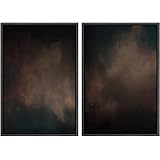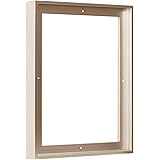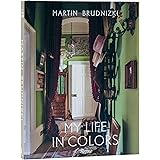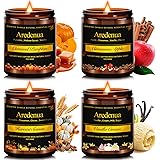Crafting a visually striking DIY Jharokha from discarded materials, as beautifully demonstrated in the video above, is not only an immensely satisfying creative endeavor but also a powerful statement in sustainable artistry. This intricate process transforms humble waste like pistachio shells and cardboard into a magnificent piece of home décor, embodying the principles of upcycling and thoughtful design. Such projects challenge conventional notions of value, proving that elegance and cultural richness can emerge from the most unexpected sources. We embark on a deeper exploration of the techniques, materials, and artistic philosophy underpinning this fascinating craft.
1. The Art of Upcycling: Transforming Waste into a DIY Jharokha Masterpiece
Firstly, the concept of upcycling forms the very foundation of creating a DIY Jharokha using materials designated as “waste.” This practice transcends simple recycling, which often involves breaking down materials, by elevating discarded items into products of higher value and aesthetic appeal. Utilizing something as ubiquitous as pistachio shells, which are typically thrown away, demonstrates an acute awareness of resourcefulness and environmental stewardship. This approach significantly reduces landfill burden and minimizes the carbon footprint associated with manufacturing new decorative items.
Furthermore, upcycling encourages a profound shift in consumer mindset, fostering an appreciation for handmade goods and the stories they carry. Each shell, once part of a snack, now contributes to a textural narrative, adding depth and character that mass-produced items simply cannot replicate. The creative transformation seen in crafting this DIY Jharokha highlights the potential within everyday discards, inviting artists and hobbyists alike to view ‘waste’ through a lens of potential and artistic opportunity. It’s an economic choice too, as sourcing free or low-cost materials makes intricate decor accessible to everyone.
2. Deconstructing Design: The Architectural Nuance of a Homemade Jharokha
Next, understanding the traditional Jharokha provides critical context for crafting a compelling DIY Jharokha. Historically, a Jharokha is an ornate projecting enclosed balcony used in Indian architecture, often adorned with elaborate carvings and intricate lattice work. Its primary function was to allow royal ladies or common people to observe events outside without being seen, adding both privacy and a distinct architectural feature. Recreating this structure in a smaller, decorative format demands an understanding of its key aesthetic elements: the overarching arch, the supporting pillars, and the overall sense of depth and perspective.
Moreover, the design process for a homemade Jharokha involves simplifying these complex architectural features into manageable craft components, as expertly demonstrated by the cardboard base in the video. The challenge lies in capturing the essence of the Jharokha’s grandeur and intricacy using accessible materials. This requires careful consideration of proportion, symmetry, and the creation of visual weight. Even a miniature version should convey the classic architectural characteristics, offering a window-like illusion that draws the eye and evokes a sense of historical narrative and cultural elegance.
3. Mastering Pistachio Shell Craftsmanship for Your DIY Jharokha
Subsequently, the selection and preparation of pistachio shells are paramount to achieving a polished and durable DIY Jharokha. Not all shells are created equal; aim for intact, clean shells without significant cracks or remnants of the nut. A thorough cleaning process, including rinsing and air-drying, is essential to prevent any future odor or residue issues, which can compromise adhesive bonds. Some crafters even opt to lightly sand the inner surfaces of shells to improve adhesion, particularly when working on vertical planes.
The application of these shells is where true craftsmanship shines. Utilizing a strong, clear-drying adhesive, such as PVA glue or a good quality craft glue, is crucial for secure attachment. Applying glue directly to the back of each shell and pressing firmly ensures optimal contact with the cardboard base, creating a robust mosaic. For achieving the distinctive relief and texture inherent in a DIY Jharokha, consider layering shells slightly, creating a three-dimensional effect that mimics carved wood or stone. This technique not only adds visual interest but also enhances the perceived value of the upcycled piece, transforming it into a sophisticated decorative element.
4. Beyond the Shells: Advanced Embellishment and Finishing for Your Handcrafted Jharokha
Moving forward, elevating the aesthetic appeal of your DIY Jharokha extends far beyond the initial shell application, venturing into sophisticated embellishment and finishing techniques. After the shells are securely in place and the adhesive has fully cured, applying a primer or a base coat of acrylic paint is highly recommended. This step ensures an even color distribution and provides a consistent canvas for subsequent decorative layers, especially if you plan on using metallic paints or a distressed finish. For a truly professional look, consider using a gesso primer, which helps seal porous materials like cardboard and pistachio shells.
Furthermore, the choice of topcoat can drastically alter the final appearance and durability of your piece. While glitter, as shown in the video, adds a vibrant, festive touch, experienced crafters might explore options like metallic gold or silver paints to mimic traditional metalwork, or even a matte varnish for a more understated, antique look. A clear acrylic sealant or varnish not only protects the intricate shell work from dust and moisture but also locks in any applied glitter or paint, preventing flaking and ensuring the longevity of your exquisite DIY Jharokha. Experimenting with antique glazing mediums or patinas can also introduce an aged, heirloom quality to the finished product, enhancing its perceived historical authenticity.
5. Sustainable Crafting Practices and Future DIY Jharokha Inspirations
Finally, embracing sustainable crafting extends beyond just using waste materials; it encompasses the entire lifecycle of your artistic endeavors. Opting for non-toxic, water-based glues and paints whenever possible minimizes environmental impact and ensures a healthier crafting environment. Thinking about the durability of your DIY Jharokha also contributes to sustainability, as a well-made, long-lasting piece avoids the need for frequent replacements. Proper disposal of any remaining scraps or cleaning materials is also a crucial aspect of responsible crafting.
This project serves as an inspiring catalyst for future creative explorations, demonstrating the vast potential of everyday items. Imagine creating an entire wall gallery of varied Jharokha designs, each unique in its embellishment – perhaps using repurposed bottle caps, fabric scraps, or even tiny pebbles to achieve different textures and themes. The skills honed in making one DIY Jharokha are directly transferable to countless other upcycling projects, encouraging a continuous cycle of creativity, innovation, and environmental consciousness within the crafting community. It’s about seeing possibility where others see trash.











